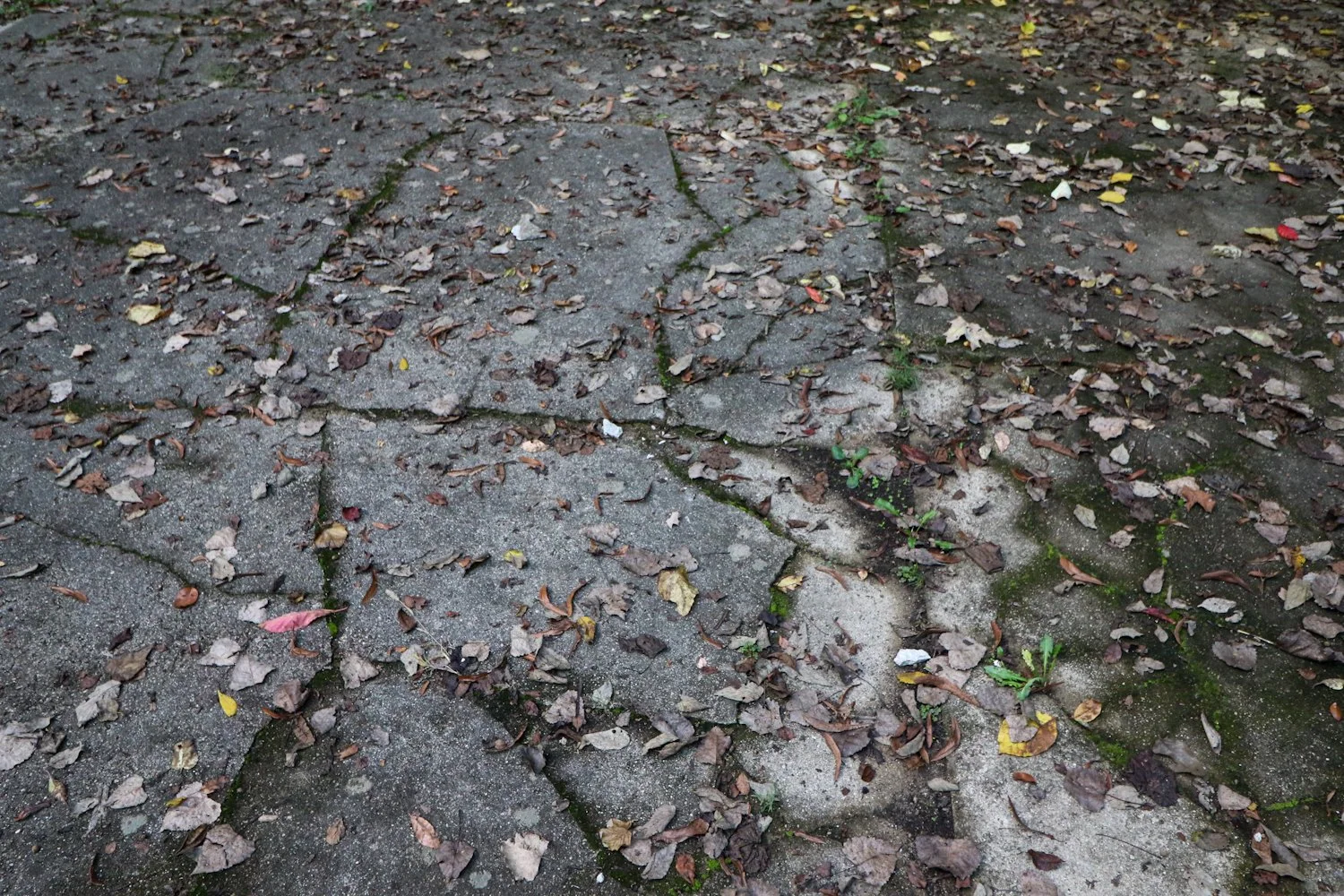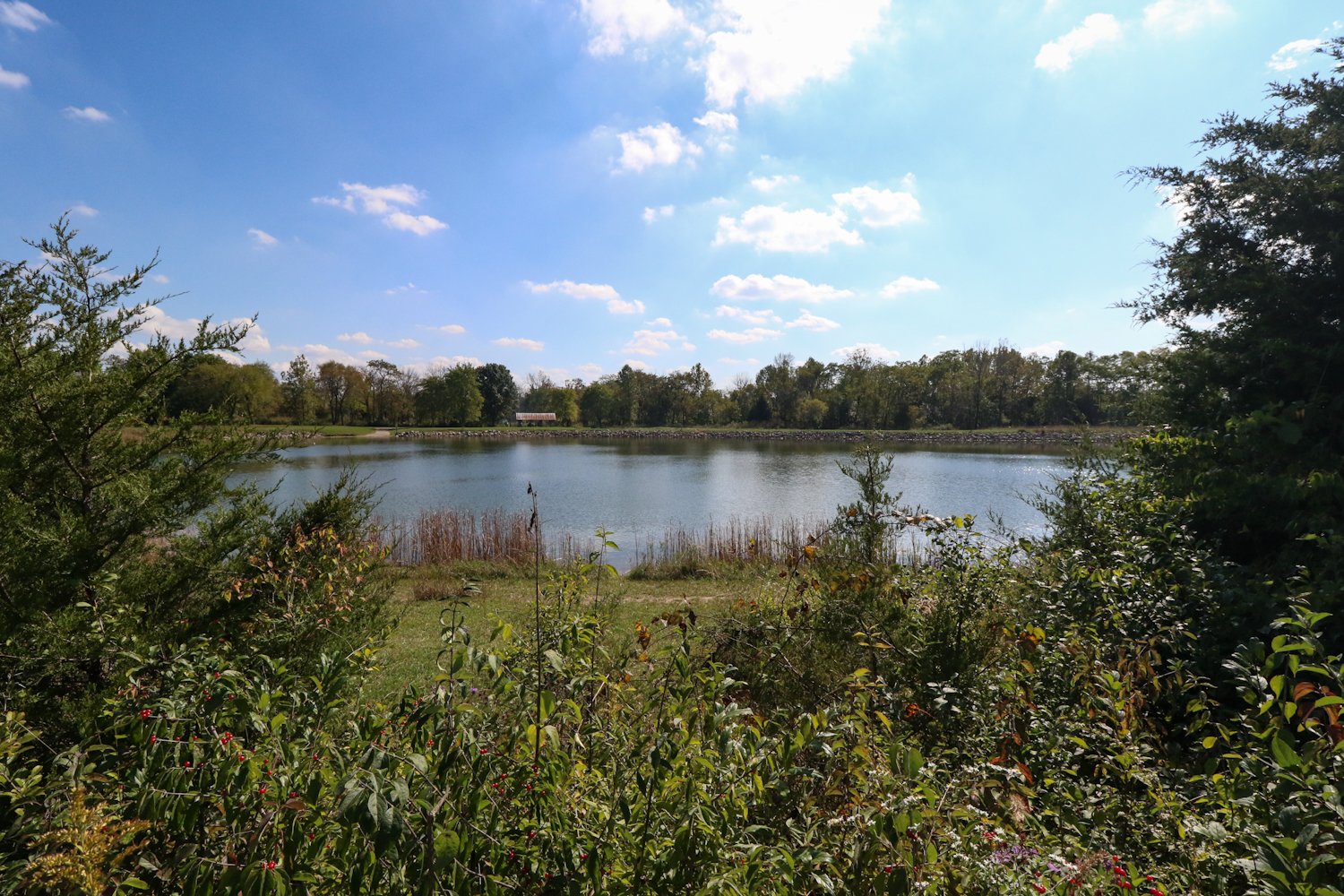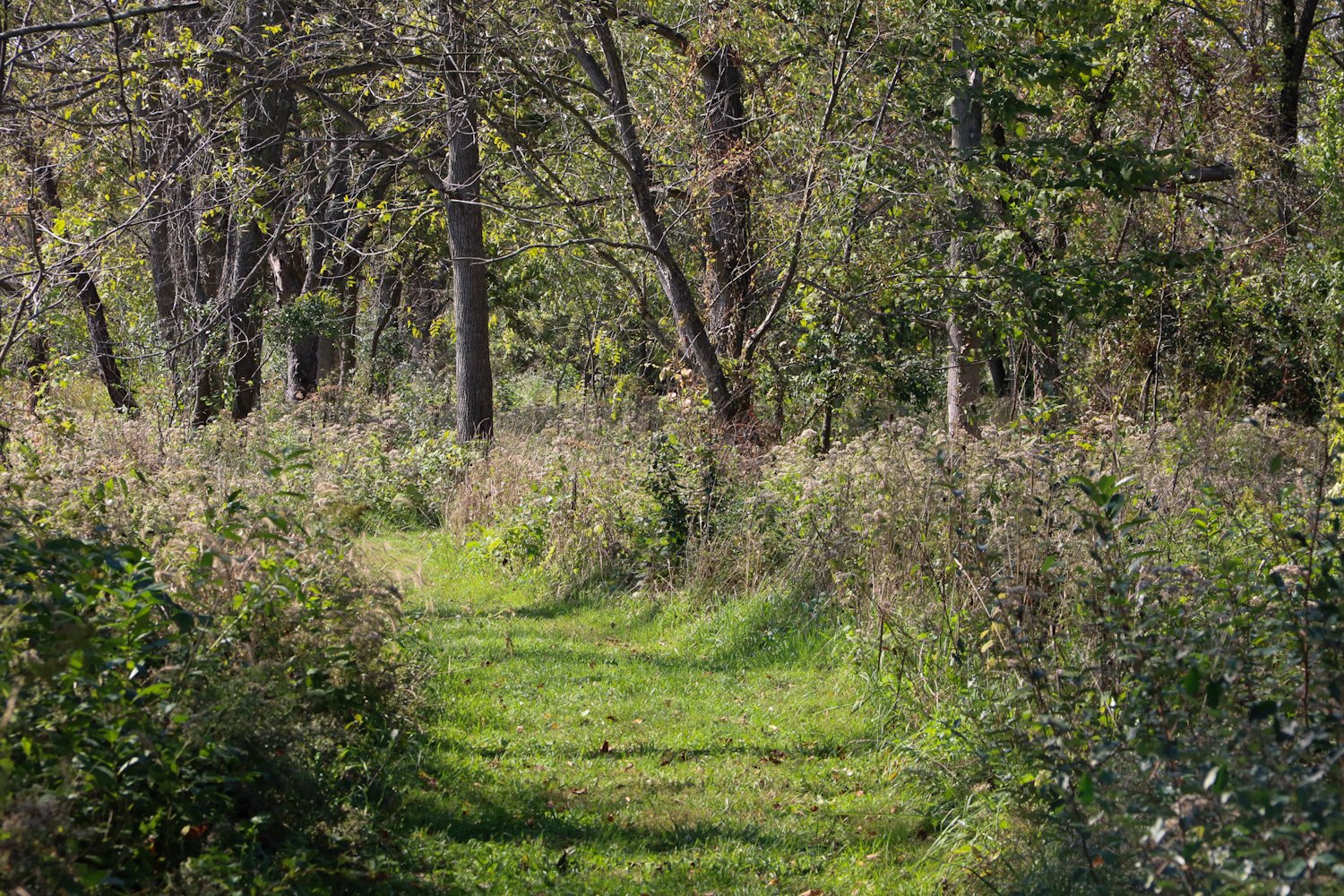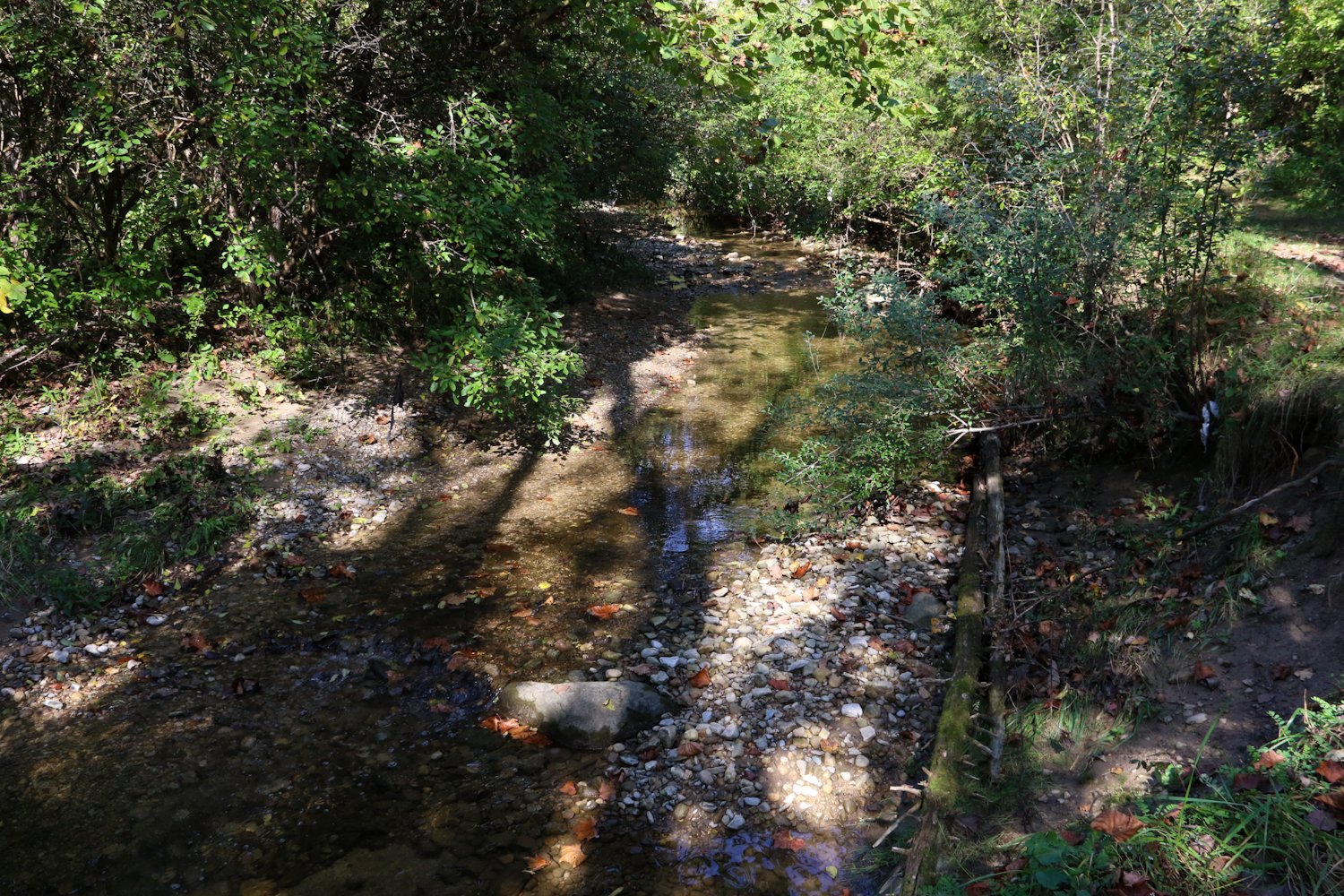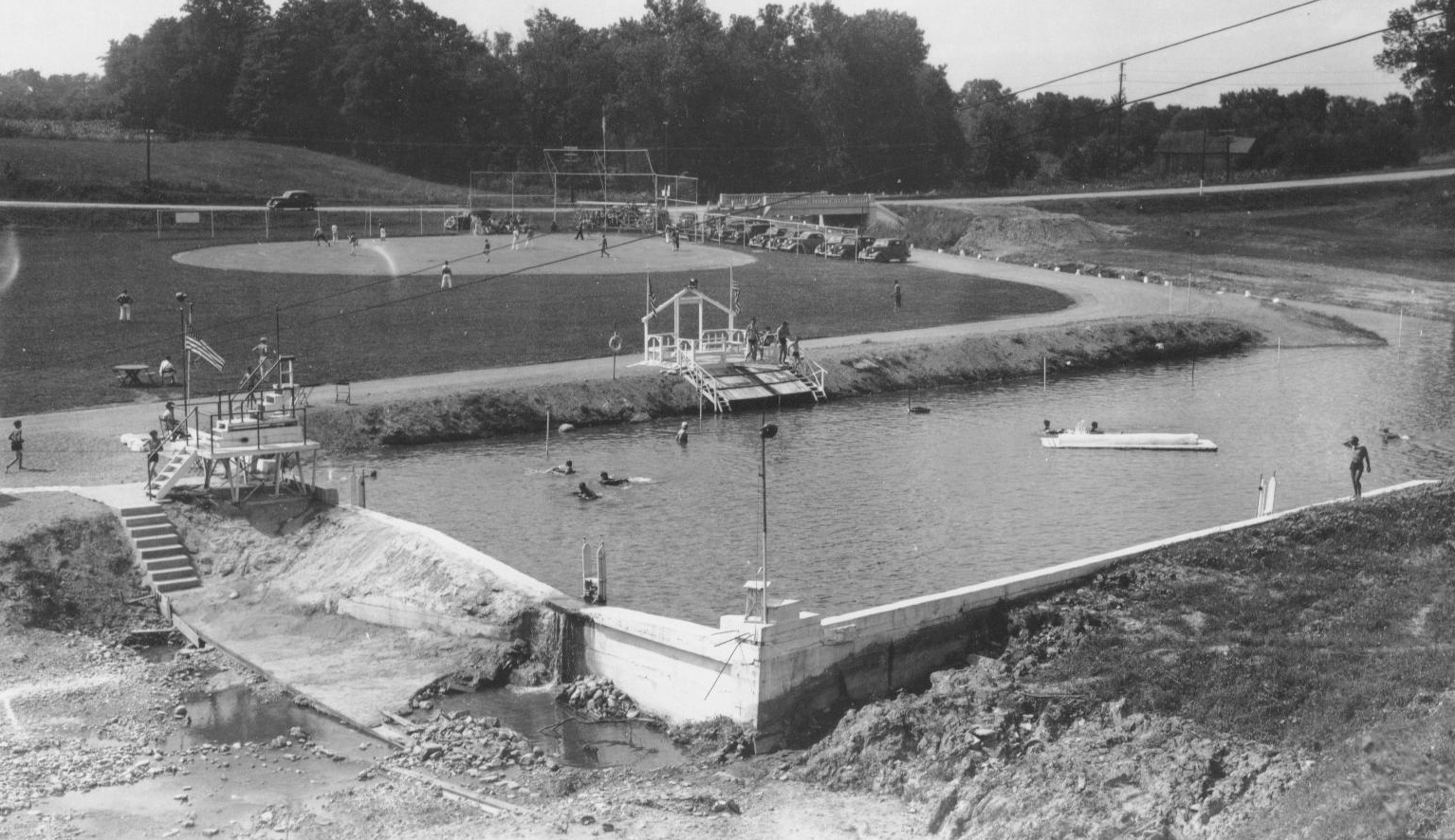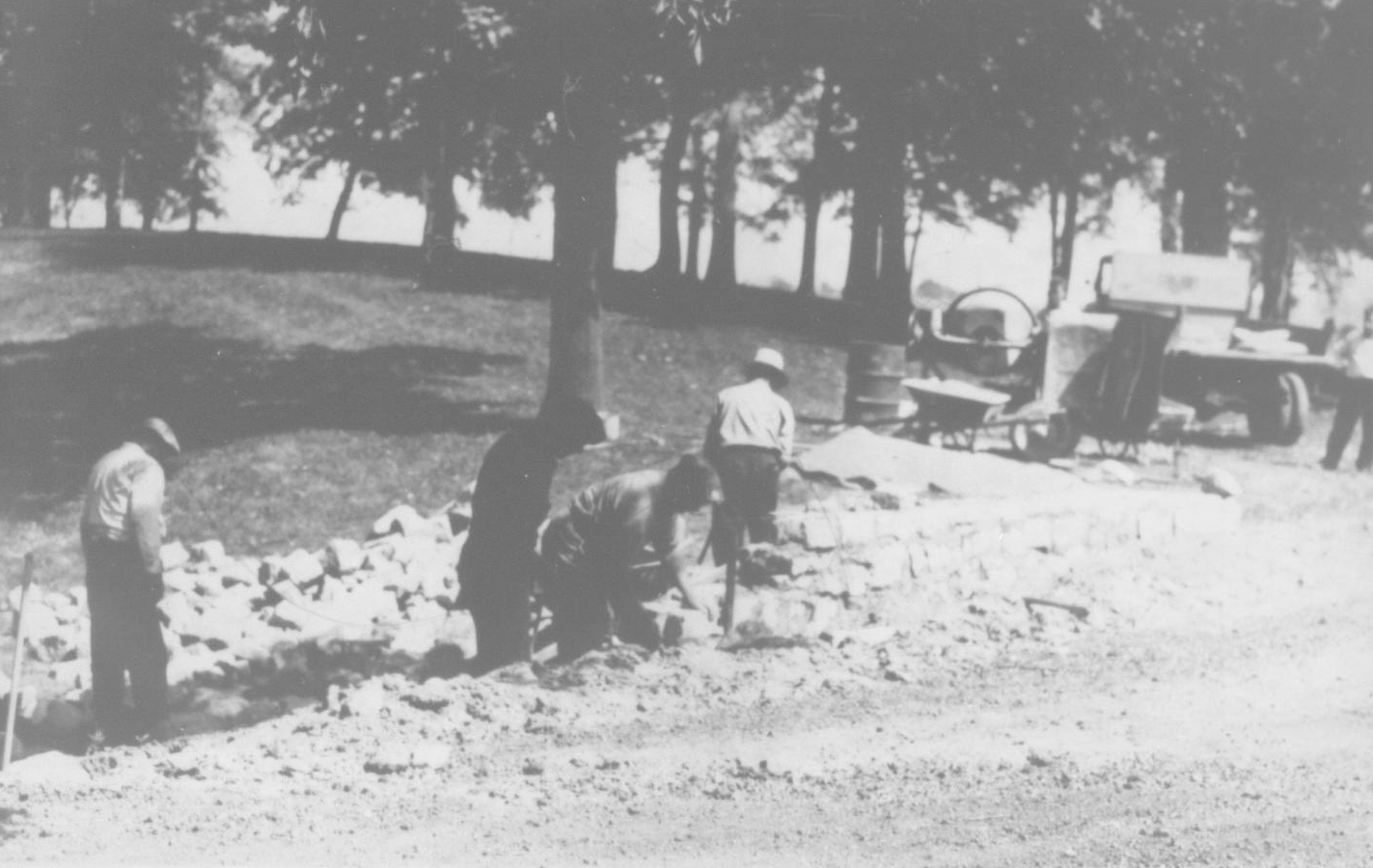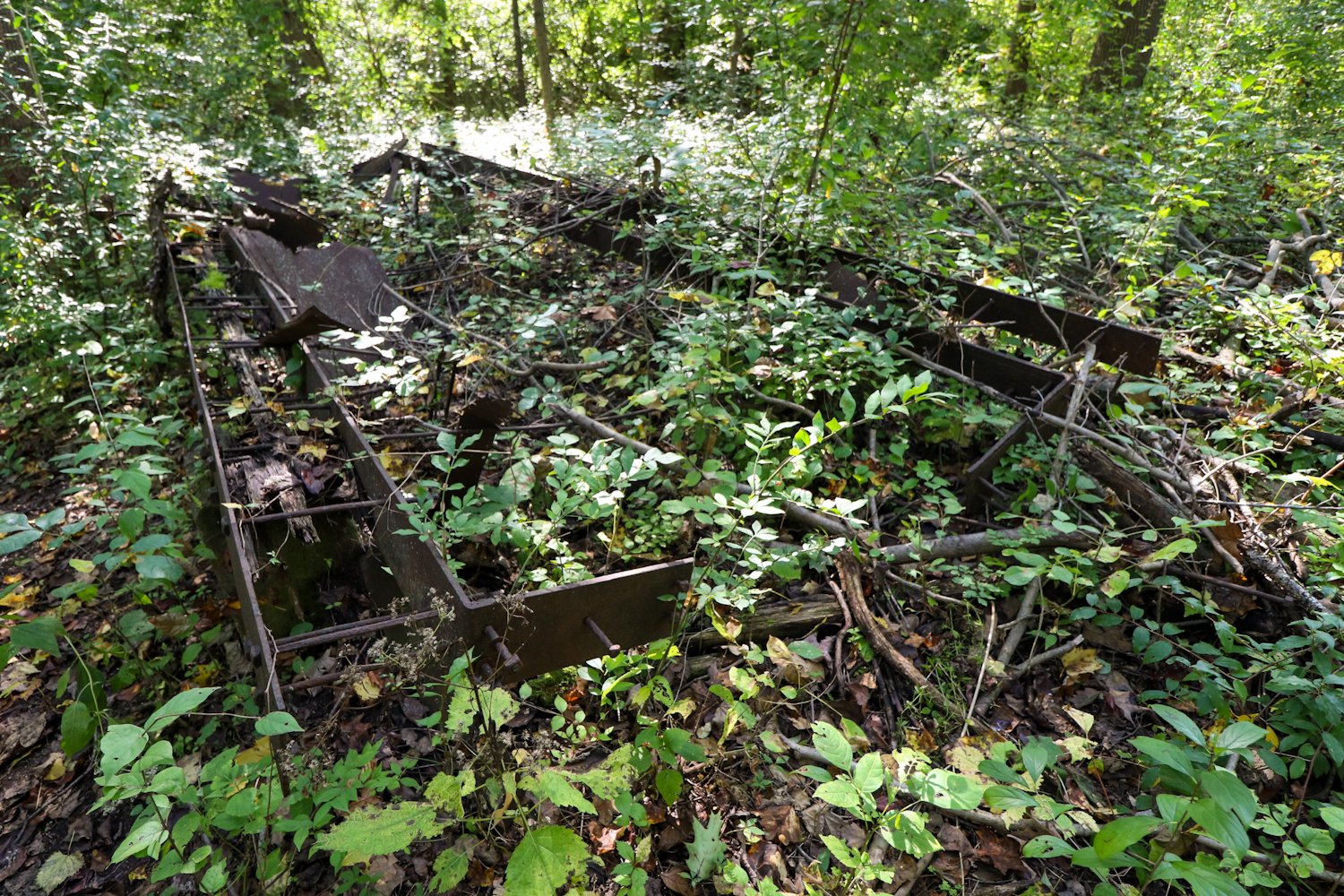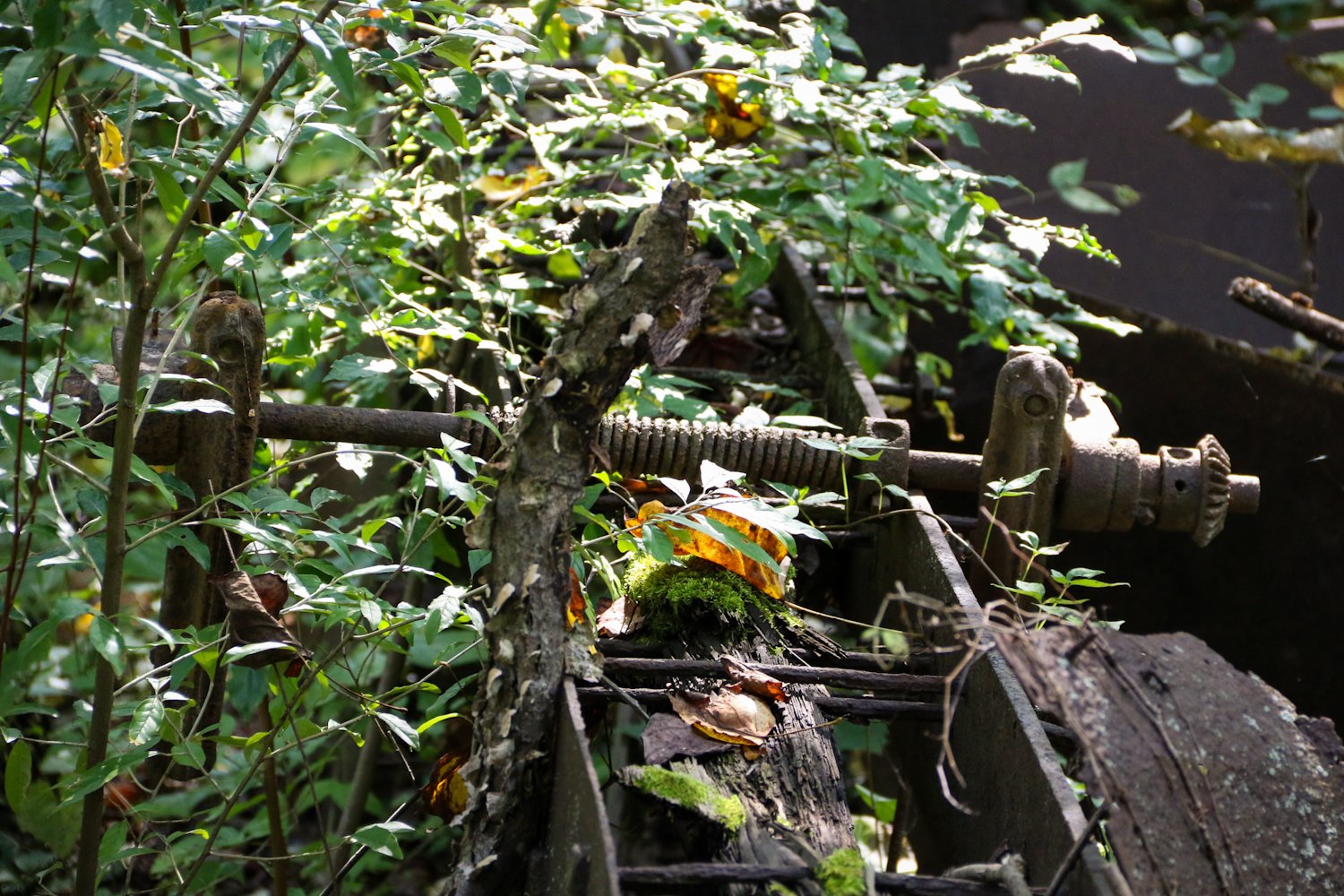The Argonne Forest Amusement Park
Argonne Forest Park historical photo. Undated photo via Five Rivers MetroParks.
There was a time in life when “urban exploration” was all I seemed to care about. Well before “urbex’ was an Instagram trend and before the pastime became heavily derided (for right or wrong) as “ruin porn,” the subject matter was more of a niche interest. Something you had to seek out from creative folks in specific corners of the internet. The content creators who resonated with me the most were the ones who told a story—folks who provided context and history alongside captivating photographs. It was their style that I wanted to emulate when I launched Queen City Discovery in 2007. A project to document my own adventures with urban exploration.
Remains of Argonne Forest Park’s dance floor.
A recurring trope that would come up on web posts, message boards, and even my own writing was this notion of imagining what a place had been like in its prime. This concept where one would attempt (or instructed others) to look beyond the peeling paint and crumbling structures, filling in the blanks and envisioning what the subject had been like when it was “alive.” It was something interesting to think about after the fact, when I was editing photographs or rewriting drafts, but it was never anything that really clicked for me “in the moment.” Even when I’d be exploring a place I’d known well before it “died” (such as the Surf Cincinnati waterpark), I’d be too distracted by the task at hand or consumed with the environment around me. On a fall day in 2021—kneeling down to touch a slab of concrete that had once been a dance floor—I tried once more to conjure the past.
• • •
Those who’ve heard of the Argonne Forest probably know it for being the site of numerous, intense battles during the First World War. For a time, however, it was also the name of an amusement park in Dayton, Ohio.
Null Marcus Hodapp was a Gem City native who’d graduated from the University of Cincinnati with a law degree in 1917. Shortly after, he’d enlisted for military service when the United States joined the Allied cause of “The Great War.” Hodapp quickly found himself in France serving alongside childhood friend Ralph Clemens. According to the published history of the 322nd Field Artillery (and a wonderful Dayton Daily News article by Sharon Gwyn Short): the enemy had capitulated and a peace agreement had been signed, but the Germans continued to shell the position of Hodapp and Clemens’ unit. Just one hour before the armistice went into effect on Nov. 11, 1918, Ralph Clemens was killed by enemy shrapnel. Hodapp and the other survivors would march out of the Argonne later that day.
Null would return to Dayton and launch a law firm with his brother, before marrying and starting a family with his wife LoRean. After winning election in 1927, he became a municipal court judge before eventually shifting to the county’s court of common pleas. The local newspaper would later describe his political legacy as “highly controversial” and the “Strangest Names In American Political History” blog points out that he presided over some “sensational” cases. Throughout all of this, though, Hodapp had another passion.
Argonne Forest Park buildings advertising “riding stables, dancing, recreation.” Undated photo via Five Rivers MetroParks.
It started in the years shortly after he’d returned from the war, when Null began amassing farmland on the city’s outskirts. Once he had enough, the Argonne Forest Park was born—a place of both leisure and remembrance. Gradually, the park was outfitted with several attractions atypical of the era: a swimming pool, race track, baseball field, dance floor, pony rides, and classic midway games such as a shooting range. Hodapp even purchased four decommissioned streetcars from a local system, using one vehicle as a concession stand and the others as rentable cabins. The park’s big event was the annual Fourth of July celebration. Before an evening fireworks display, Hodapp and other veterans would conclude a two day reenactment of the Battle of the Argonne Forest.
Patrons enjoying Argonne Forest Park. Undated photo via Five Rivers MetroParks.
From July 1927 to the beginning of another world war, Null’s park was a local mainstay. However, the last fireworks show was held in July 1941 and wartime rationing is said to have caused the park’s demise when Daytonians started saving their gas for the war effort. In January 1945, just months before the Second World War reached its conclusion, Null Hodapp passed away. Eventually, America’s Argonne Forest came into possession of the local government. These days, the natural flora of the Possum Creek MetroPark has long overgrown the former amusement grounds. Just like its namesake in France, however, there are still remnants of the past hidden under the dense foliage.
• • •
It was October, but it felt more like July. The leaves were still a lush green and the sun kept the temperatures in the high 80s. Whenever the path wound back into the forest and under the trees, we’d get relief. It was along this dirt trail that my Dad and I went for an afternoon walk. He’d stumbled upon this place’s history awhile back and we were finally getting around to visiting in person. Our legal stroll through a public park was much more relaxing, although not quite as exciting or as adventurous compared to my former adventures in urban exploration and “recreational trespassing.”
Argonne Lake at the Possum Creek MetroPark in Dayton, Ohio.
Along the way, there were a handful of markers denoting the former amusement park, but the full significance of Hodapp’s war experiences and historical standing didn’t set in until I happened upon that aforementioned Dayton Daily News article nearly a year later. Seemingly, the few remnants that could still be found were relatively innocuous, nothing compared to some of the “bigger” abandoned amusement park stories I’ve covered like: Fun Spot, Six Flags Kentucky Kingdom, and Ghost Town in the Sky.
Building remnants hidden in the vegetation.
Argonne Forest Park’s pool and baseball field. Undated photo via Five Rivers MetroParks.
Remnants of the pool wall.
Steel remnants near the former site of the pool.
Argonne Forest Park’s footbridge. Undated photo via Five Rivers MetroParks.
Remnants of the footbridge hidden in the woods.
Remains of a park structure.
One of the paths leading to some of the park’s ruins.
Former stonework from the Argonne Forest Park that’s still part of the MetroParks trail today.
Workers placing stones at Argonne Forest Park. Undated photo via Five Rivers MetroParks.
Remains of Argonne Forest Park’s stonework.
One of Argonne Forest Park’s streetcars that were used for both concessions and lodging. Undated photo via Five Rivers MetroParks.
Remains of a streetcar.
Streetcar details.
A streetcar chassis in the woods.
Streetcar ruins.
Details of streetcar remains.
When we got to the former dance floor, I tried to summon that old urban exploration trope, tried to breathe in the moment, and manufacture more significance to a story that I—for some reason—thought needed it. Something more than just a footnote in the logs of a local historical society. I knelt down, touched the concrete slab, and did my best to envision what this place had once been.
Where had the dancers positioned themselves on the floor? How many awkward folks had lingered on the sides? Were any too drunk on whisky and patriotism to stand as the music played? Maybe the crowd rushed off to the nearby clearing when they heard the fireworks. What did their faces look like under the lights? Were there even lights? How well were they dressed? What was it like to socialize while donning a full suit in the Midwestern humidity? Maybe the band was off to the left. Or straight ahead. What would they have played? There had to have been a band, right?
Remains of the dance floor.
Ultimately, I had more questions than any sort of conclusion or vision. I couldn’t really see it. I just knew what it had been because the sign nearby explained it. Even now, nearly a year later and knowing more about Null Hodapp, I still can’t envision it. Can’t really picture the man cavorting around the dance floor or toasting drinks to his fallen comrades.
Departing the former Argonne Forest Park and current Possum Creek MetroPark.
And maybe there’s no need to anyways. The story stands on its own, even if it’s a bit straightforward, simple, and short (and didn’t require any windows to climb through or fences to hop over). If anything gives a better insight into the man who was Null Hodapp and the experiences he had, perhaps it’s his poem featured on the MetroParks website.
The sun set among the distant hills–
Warm hands shook a parting good-bye
Something more than Friendship–Comradeship.
Silence sealed lips–thoughts were afar
Tears moistened sunburned cheeks
Good-bye buddie, good-bye–God bless you.Excerpt from “Memories” by Null Hodapp
I’m glad I know about the place, though. Glad I saw it and glad we went.
Thanks, Dad.
As for urban exploration, well, I’m not quite done with that subject just yet. More on that later…
• • •
To see more historical photographs of the Argonne Forest Park, visit the Five Rivers MetroParks website.
Over the years, numerous stories on this website have been about abandoned amusement parks. To view them all, go here.
Since 2007, the content of this website (and its former life as Queen City Discovery) has been a huge labor of love.
If you’ve enjoyed stories like The Ghost Ship, abandoned amusement parks, the Cincinnati Subway, Fading Ads, or others over the years—might you consider showing some support for future projects?

